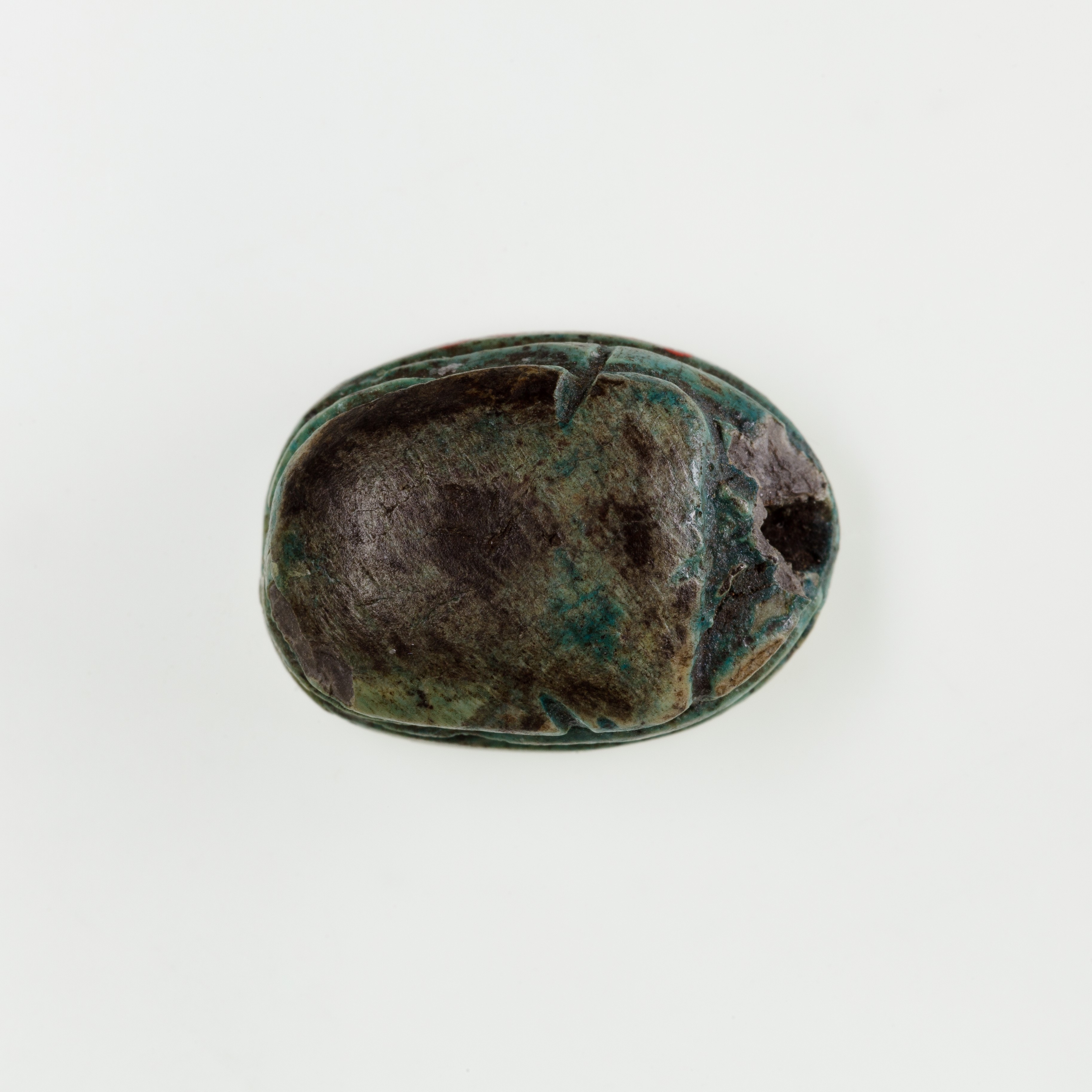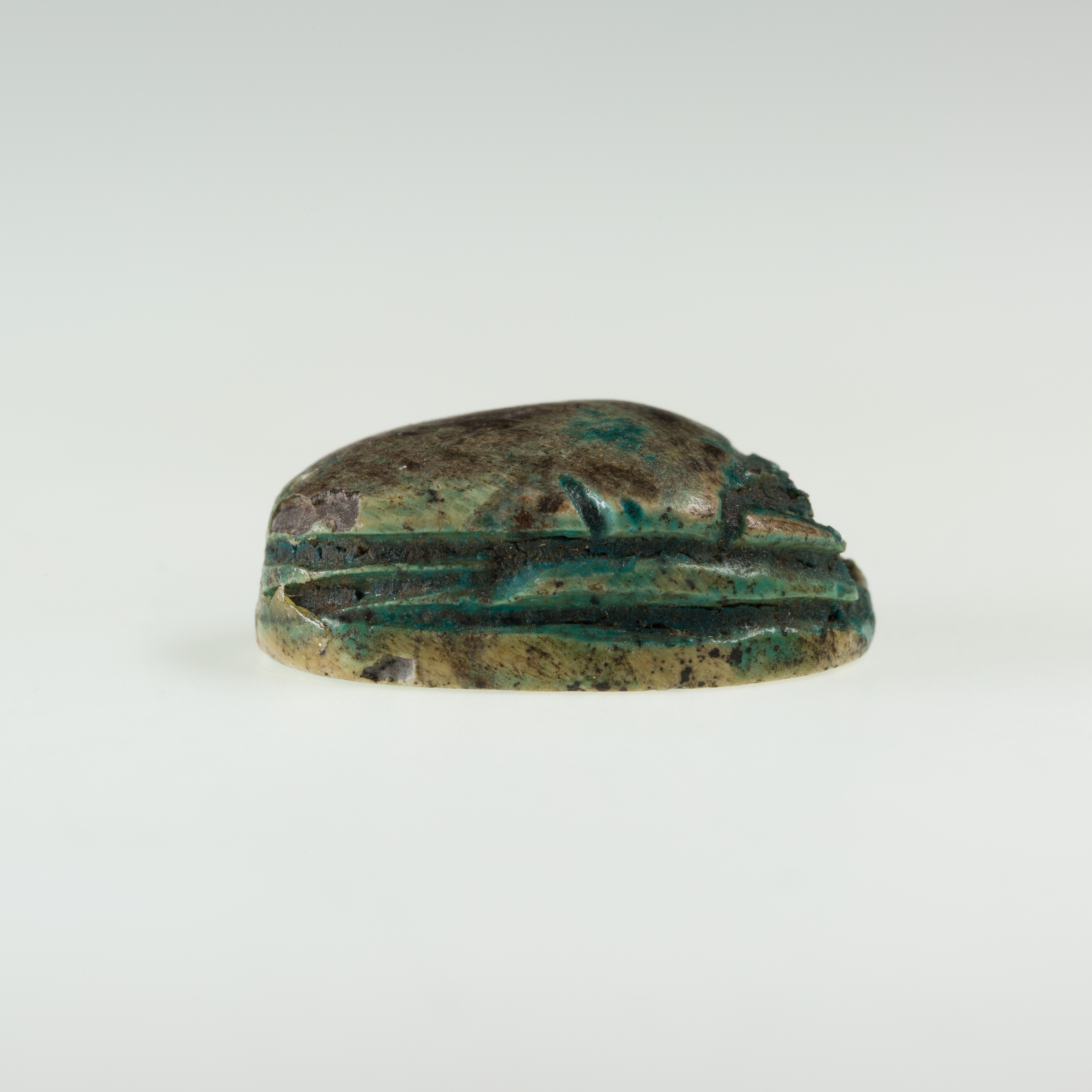Scarab with Lion and Uraeus
Second Intermediate Period
Canaanite scarabs of the late Middle Bronze Age (ca. 1640–1500 B.C.) frequently show scenes with a wild animal such as a lion, ibex, antelope or crocodile, or to a lesser extent with a donkey or hippo, only a few examples depict bulls. Except for the donkey and bull, these animals live in the wild and were feared as well as respected. During this period, Canaanite seal carvers decorated the interior of animals with parallel lines, or short strokes to represent their fur. It has been suggested that compositions with wild animals symbolize the successful dominance over nature and control over chaos. The underside of this scarab shows a uraeus and a seated lion, its mane rendered by long strokes. The barely discernible motif in front of the lion’s mouth may be another cobra.
This image cannot be enlarged, viewed at full screen, or downloaded.
This artwork is meant to be viewed from right to left. Scroll left to view more.





